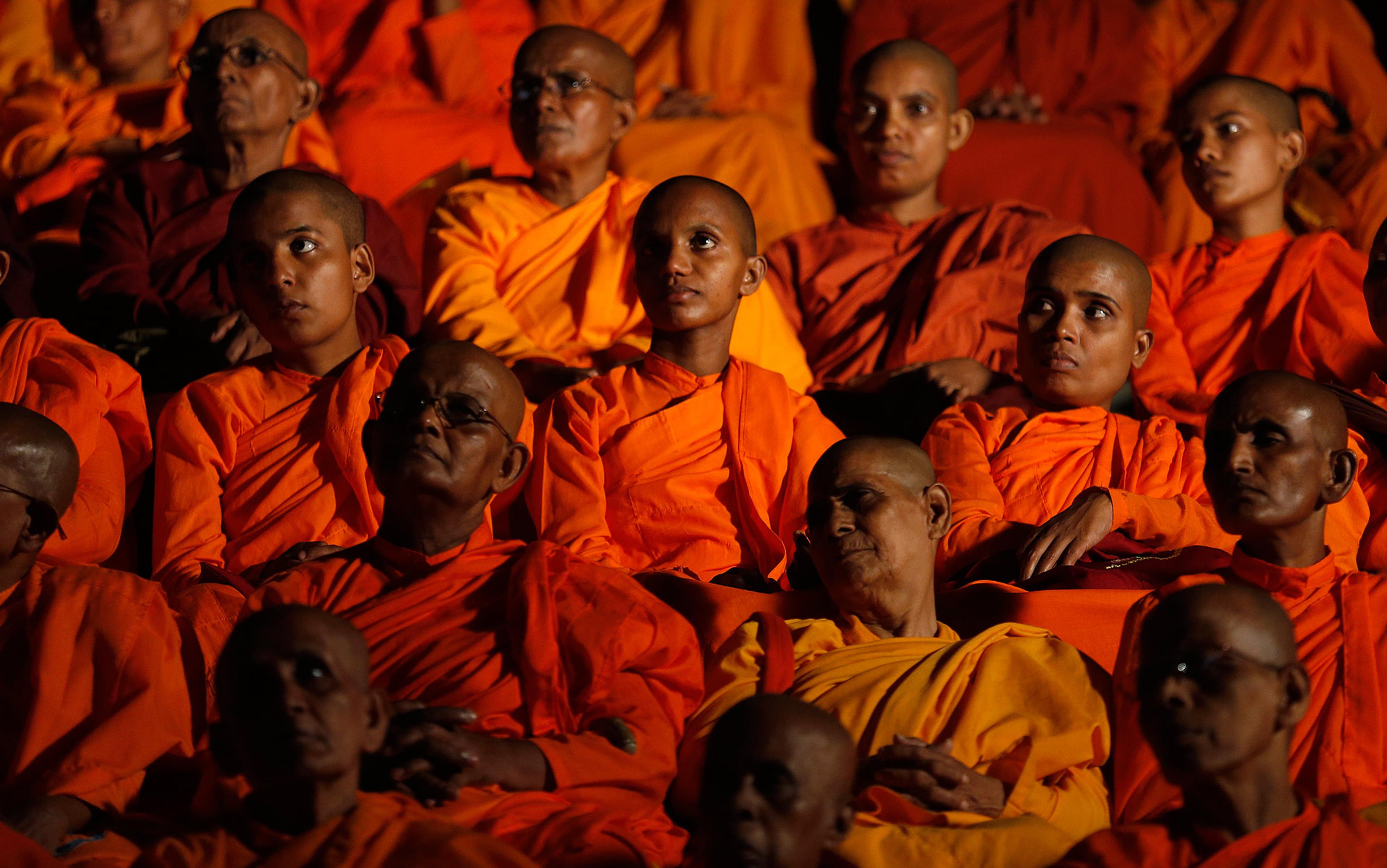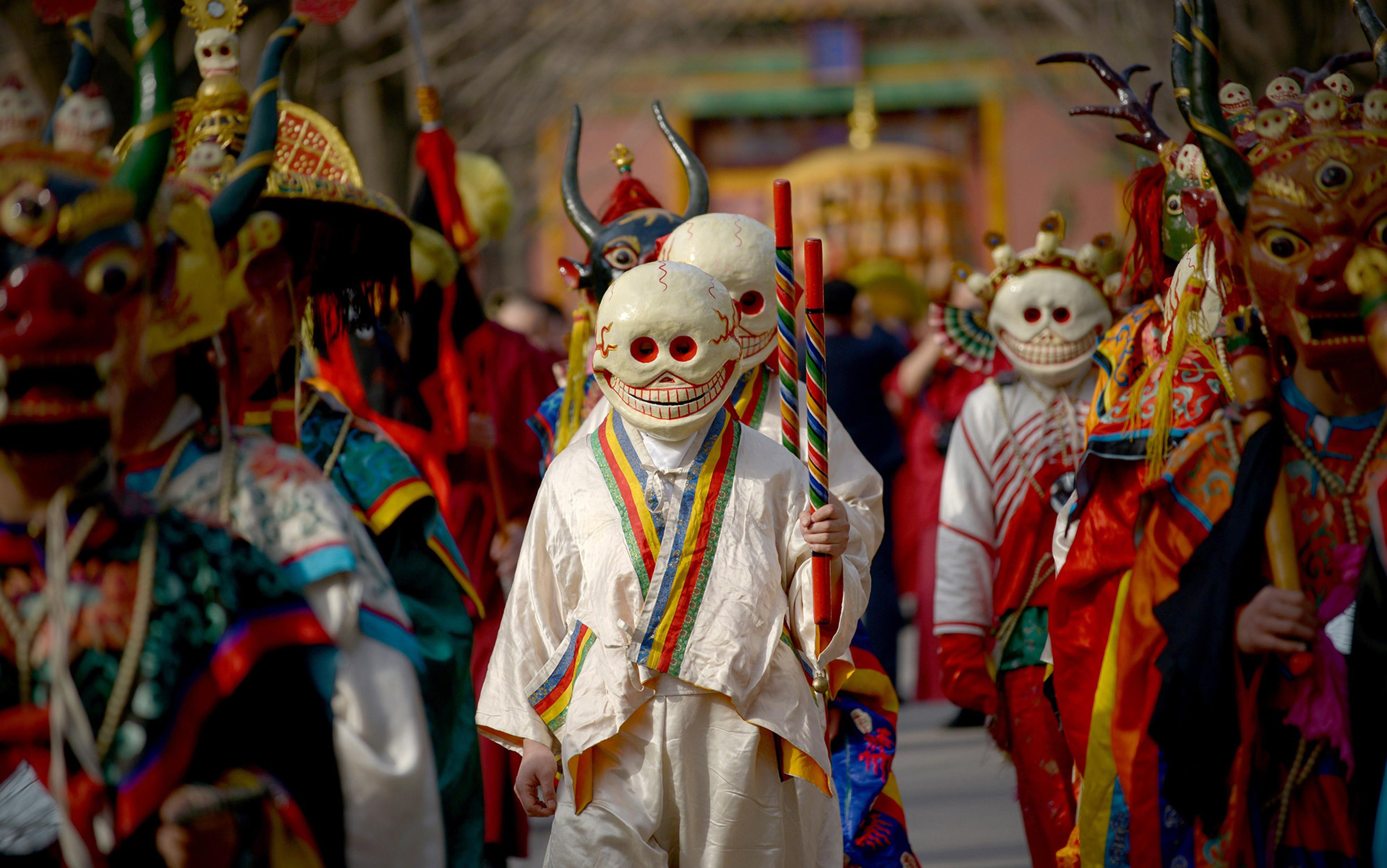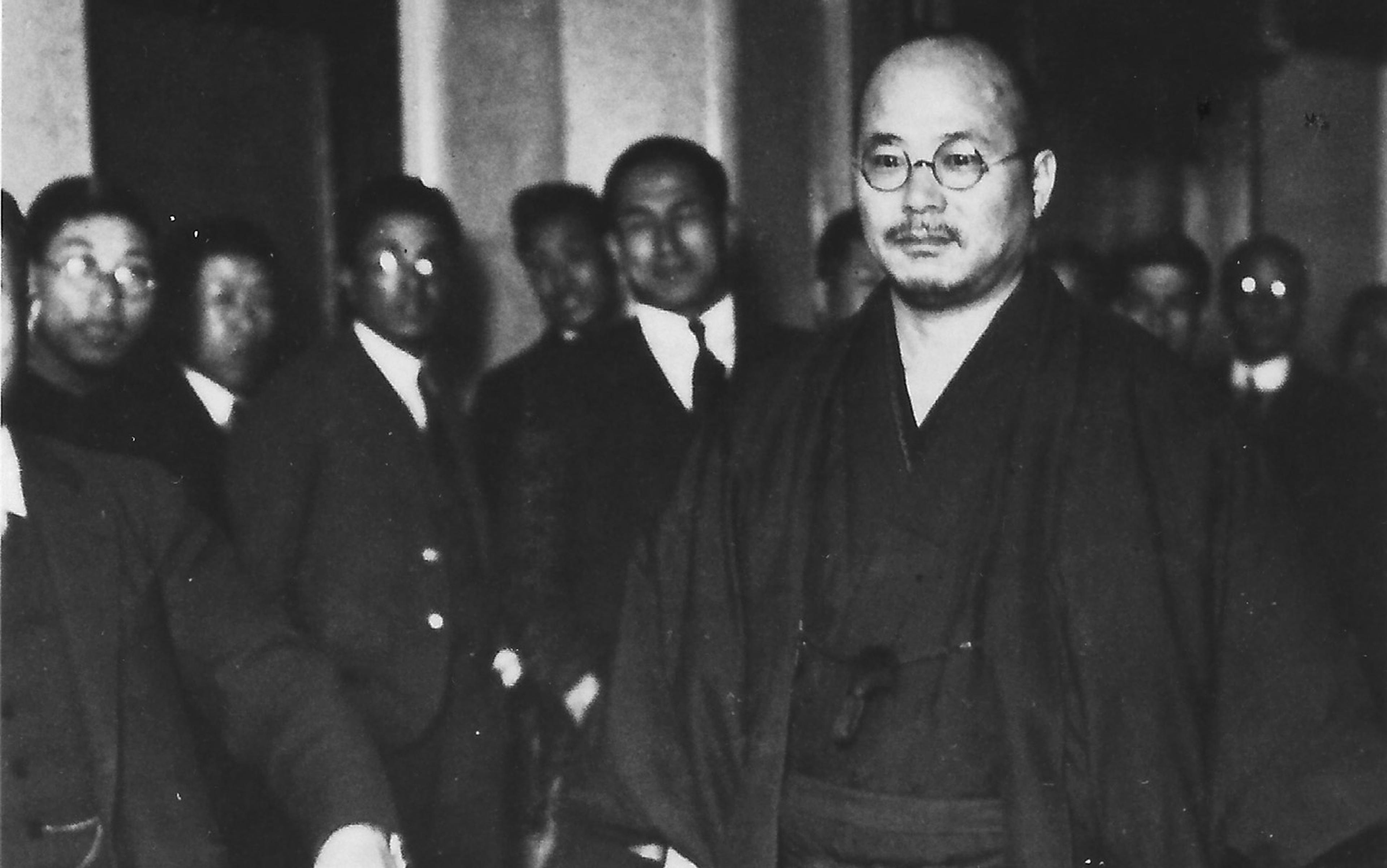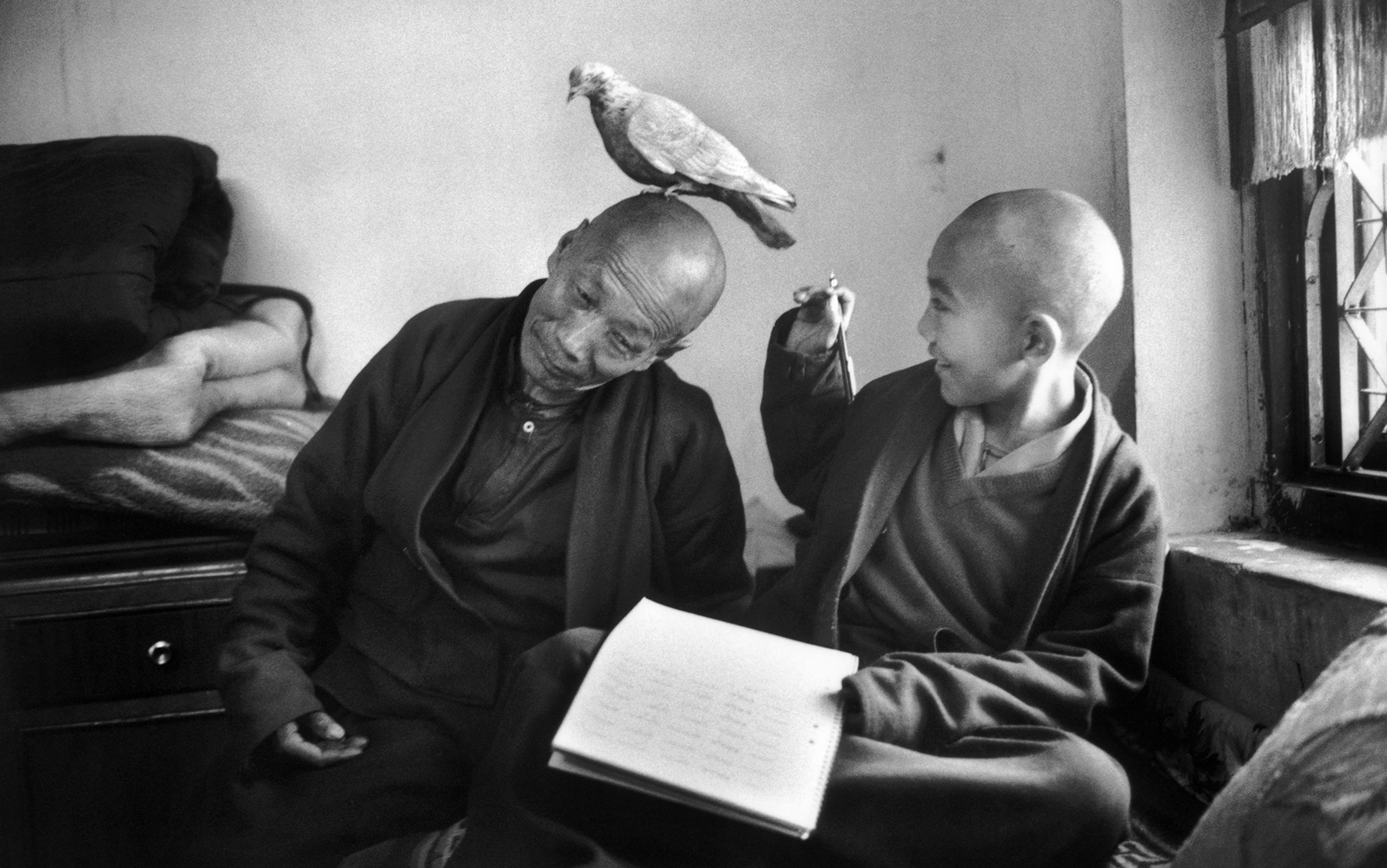Most Buddhists recognise that the injunction not to kill, the first of the religion’s five precepts, is central to the ethos of the different Buddhist traditions. In the past decade, however, a surprising amount of popular and scholarly discussion on the subject of killing and Buddhism – from Slavoj Žižek’s commentaries, to Michael Jerryson’s essay ‘Monks with Guns’ in Aeon – has stressed how violent Buddhists themselves have historically proven to be.
Being what they are, some human beings will choose to kill, for better and for worse reasons. And many of them might happen to have been raised in one of the various Buddhist traditions, from South and Southeast Asia, to North, Central and East Asia, and, increasingly since the 1970s, in many Western countries as well. Unsurprisingly, then, there are numerous cases of cultural Buddhists killing for the usual reasons. Animals, especially in the high Tibetan plateau, as elsewhere, have been a staple source of sustenance. Sometimes, defensive wars have been engaged to save a city or state from foreign incursion. Buddhist women have chosen to abort unwanted foetuses. There is also textual record, stretching back to the early Buddhist period, of suicide being condoned in rare cases where its agent possesses remarkable properties of wisdom, is incurably ill, and is, in early Buddhist terms, an arhat (an ‘awakened one’). These cases of suicide, but notably not others, were exonerated from moral blame by no less an authority than the Buddha himself.
However, in large part, killing is antithetical to the basic tenets of Buddhism. Along with exhortations to nonviolence and compassion, the early Buddhist monastic case law (vinaya) presents the most overt claims for the punishment of lethal acts, its severity seeming to indicate a scale of more or less bad acts, at least for monastic agents. But these do not explain their wrongness per se. There are other intriguing but disparate statements about killing through the first millennium of the written record, with subsequent comment deriving largely from this earlier textual stratum.
In the Indian Mahāyāna, and culminating in Tibetan and Chinese Mahāyāna traditions, the ethic of the bodhisattva – something like a saint or an aspiring one, with superlative properties of wisdom as well as compassion – even commends lethal acts when they are informed by these unusual capacities. These include compassionate or so-called ‘auspicious’ homicide, as well as religious and altruistic suicide, the latter particularly evident historically in Chinese Buddhism but also more recently in Vietnamese and Tibetan Buddhist cases too, in which lethal acts directed purely towards oneself are intended to inspire others, somewhat paradoxically, to a moral appreciation of the inherent value of altruistic self-sacrifice. Hence, we are increasingly familiar with examples of Buddhists in Tibet self-immolating for the cause, ultimately, of the amelioration and extirpation of all sentient suffering. I’m not sure what Žižek might say about that, but surprisingly he’s not mentioned it yet.
The would-be Buddhist ‘ethics of killing’ thus developed in a piecemeal fashion, the various traditions emphasising different kinds of agents committing various kinds of acts, because these practices reflected the cultural norms specific to a range of Buddhist communities. The Buddha himself in his sermons (suttas) tended to comment only generally on lethal practices, and so questions around permissible killing in some cases may have been left largely to the cultural norms and mores of those Buddhist cultures that, over the centuries, engaged them.
In one sense, this is inevitable. But to suggest that these practices are endorsed by Buddhists, rather than sometimes tolerated by them, is misleading. The exceptions prove the rule, and many Buddhists don’t think certain lethal practices and the assumptions behind them are compatible with Buddhism – just as many Theravāda practitioners reject the lethal bodhisattva ethics of the Mahāyāna (though this hasn’t stopped at least one Theravāda monk, in Sri Lanka, from self-immolating for a cause). When in 2011 the 14th Dalai Lama appeared to exonerate the intentional killing of Osama bin Laden at the hands of US state agents, this added potent fuel to the discussion, culminating most provocatively with a Time magazine cover two years later devoted to the oxymoronic ‘face of Buddhist terror’. The subject of what appeared to be an inherently Buddhist relation with lethal violence – of ‘Buddhist terror’ as opposed to violence espoused by some self-identifying Buddhists – had by this time really hit the world stage.
Where has this story gone in the decade since then? It would appear, very badly downhill. Lethal violence committed by Burmese Buddhists between 2015 and 2022, both military and civilian, has reached levels so abysmal that they’re responsible for the first unequivocal genocide of the 21st century, committed in 2017 against Rohingya Muslims. If it seems uncontroversial to grant that there’s a multivalent phenomenon of violence in Buddhist polities, intended by Buddhist agents, and sometimes even committed in the name of Buddhist identity, there’s nothing to support the notion of Buddhism condoning acts of lethal violence, and so there is no sense in saying that those who commit such violence in the name of Buddhism are anything other than merely nominal Buddhists. What justifies my claim?
I reject the notion of inherently Buddhist lethality, because Buddhism is, first and foremost, a philosophical vision of sentient life that seeks to improve upon the worldly version with which we are all too familiar. The Buddha taught a doctrine that reconceives the nature of existence, and human life within it, from the ground up – just as so many philosophical systems of the real and the true and the good have done. Like many of those, it centres on what the English philosopher Peter Strawson in his book Individuals (1959) called a ‘revisionary metaphysics’, as opposed to a ‘descriptive’ one: it frames the generally received understanding of human life within one that analyses that understanding as ultimately inadequate. The Buddha’s proposal thus has something in common with – and rivals – those of Plato, Aristotle and Aquinas, or Descartes, Spinoza and Kant, or Hegel, in its depth and level of insight into the nature of being, the mind, consciousness, causation, truth, ethics and moral agency, and ultimately freedom from the suffering of being alive.
That sounds fine, but what does it have to say, uniquely, about killing? Moreover, if all lethal acts are, by definition, just acts of taking life, and the Buddhist prohibition on taking life tells us they are thereby wrong, accepting (or indeed denying) the impermissibility of killing does not explain why some such acts may be more or less wrong than others. To answer that, we don’t want to know whether some lethal acts are acceptably ‘Buddhist’ in any given cultural sphere. Rather, we want to understand what is normatively true of any lethal agent, in any human context, in virtue of the Buddhist worldview. This is especially so if, as Buddhism claims, understanding the true conditions of human embodiment is intimately related to what it calls ‘right action’ and ‘right intention’: that is, intentions and acts that are not merely good in a moral sense but also in tune with what is real, rather than illusory, and with what ultimately benefits rather than harms sentient beings.
The Buddha’s norms about killing were grounded in a metaphysical view of what is real and what is illusory
Obviously, killing may – by taking life – achieve many varied goals; and, while always normatively problematic, many argue that its negative value may be mitigated by such factors as good intention or compassionate motive, or the comparative grounds of positive benefit, the amelioration of a worse suffering, the obviation of other forms of violence, and so on. In the Buddhist context, too, the rationales and the normative status of acts are, in general, assessed by virtue of their qualitative intentions (cetanā) giving rise to morally laden action (kamma) and probable consequences (vipāka). These three related categories provide much of the conceptual framework for classical and modern Buddhist ethics; see, for example, Damien Keown’s book The Nature of Buddhist Ethics (1992) and Charles Goodman’s book The Consequences of Compassion (2009), for the latter.
But if we seek to understand why some among other lethal acts conceivably aren’t always wrong, then this may be not only due to contingent factors such as intentions or their consequences. One could hold that lethal acts are more or less wrong solely by virtue of the intention behind their commission. But perhaps it’s also because of something that intrinsically distinguishes them as the kind of act they are. In this case, moral reasoning would not rely wholly on the evaluation of contingently subjective conditions such as discrete intentions and feelings giving rise to particular actions, significant as these may be. Rather, it would analyse the objective cognitive conditions that make a particular class of intentional act possible to start with.
By seeking to understand these conditions, we can begin to grasp why, fundamentally, ‘unskilful’ (akusala) acts are understood to be not merely wrong on the level of moral valence, or qualitative value, but more inherently misguided on the level of cognitive illusion. The Buddha’s norms about killing, and their development through the early tradition, were after all grounded not only in a moral view of goodness, but in a deeply argued metaphysical view concerning what is real and what is illusory. Yet virtually no scholarship on the Buddhist ethics of killing articulates a Buddhist-philosophical theorisation of killing per se. I approach this ethics, in my own analysis of the major classes of interhuman killing, by focusing on their intentional, rather than thematic, differentiation.
Instead of killing being evaluated, in the first instance, through a normative lens (focusing on whether it would be good or bad, permissible or impermissible) with respect to extrinsic moral determinants, I conceptually reframe killing by understanding its genesis in the cognitive acts that define what kind of act it is. That is, it is specific modes of conceiving the objects of action that determine their conditions of possibility, without which they could not arise in the first place. The rationales and normative status of lethal acts can then be evaluated not merely by a moral calculus concerning their qualitative intentions or possible consequences, but also with respect to the metaphysical context of ‘co-arising interdependence’ (paṭiccasamuppāda in Pali, and pratītyasamutpāda in Sanskrit), or the mutual determination of subject and object of action, in which killing necessarily occurs. In other words, any action has to be understood in relation to how individuals exist at the level of reality that Buddhist metaphysics describes. In assessing the relations between the cognition and phenomenology giving rise to killing, and the real effects that do or do not arise from them, we can gauge whether would-be justified lethal projects are rationally coherent and so, to that degree, defensible.
Let’s take an unfortunately ubiquitous example. Obviously, killing in war is a convention that we now take for granted. Unless we are pacifists, we don’t usually question exactly why we accept it as a normalised behaviour through human history, however much we might also regret recourse to it. But why don’t we? Firstly, we should be clear that, in war, living beings – persons – are literally exploited to serve an end beyond that exploitation per se: it is not the case that war is waged purely in order to accumulate a sum of dead bodies. Rather, living bodies are ‘sacrificed’ (so we say) to an end that is often comparatively abstract or immaterial: in the name of the nation or nationalist supremacy, or to serve ideological, political or ethnocentric domination.
Secondly, like any intentional behaviour, killing in war, for whatever reasons war is waged, has constitutive conditions of a cognitive as well as a consequential kind. That is, beyond intending to achieve a certain desired outcome, for such killing to be waged at all, the ‘enemy’ must be conceived in specific ways in order that he can qualify for being killed. Killing ‘the enemy’ combatant fundamentally requires that persons be conceived under a universal of one kind or another: for example, as a heretic or an infidel, a Royalist or a Roundhead, a communist or a tsarist, a democrat or a fascist, a Hutu or a Tutsi, a Sunni or a Shia Muslim, and so on. These are all words for how particular things, in this case human individuals, can be identified by means of common (cultural, political, religious etc) characteristics. As repeatable entities, they can be instantiated by many particular persons. While these universals might be more or less accurately ascribed to certain individuals, as an agent of war I necessarily conceive of such persons as exclusively whatever identity serves my lethal purposes to the exclusion of all other markers of identity.
Killing in war is a conventional human behaviour, glorified down the ages
That is, I mentally attach a universal category to the individual such that it absolutely determines the person in a sense that renders all their other attributes or properties literally irrelevant. When the law then codifies that exclusive ascription of the universal to some individuals willing to kill and die in its name, and classifies them as ‘enemy combatants’, we now have a collective mental structure that authorises the socially and culturally sanctioned killing of those individuals. Furthermore, this permission to kill regularly spills over to non-combatant civilians, who otherwise meet the identity conditions for being the enemy, even if the law forbids their being killed: what we call ‘collateral damage’.
Whether or not an individual soldier, given legal sanction by the state to kill or be killed on its behalf, assents to this state of affairs is not at issue; as noted, killing in war is a conventional human behaviour, glorified down the ages. But it is also, a Buddhist could suggest, constitutively opaque and possibly incoherent. On what basis could a Buddhist hold this view? All Buddhists, with other nominalists about universals, hold that universals do not exist in any real sense but are only nominally imputed to, for example, persons or nations or cultural identities. Because the much more complex and unique constitution of the individual as individual transcends its various properties, the Buddhist can question whether it makes sense to lethally subordinate the living person to a non-living universal that on this definition will always be, in comparison with the former, irreal.
Clearly, individuals can be identified by virtue of any one of the universals they conventionally instantiate, but is that a sufficient basis for killing them? If it is, it means we tacitly consent to the fact that (1) it reduces the individual to a single abstract identity and thereby (2) valorises the inexistence of the universal over the substantial existence of persons as particulars, and so (3) absolutely subordinates the individual person to some other universal as a dominator identity or value. For the Buddhist project of the elimination of suffering, whatever value putatively represented in killing the individual-qua-universal cannot be seen to be ethically commensurable with the person’s capacity to engage its liberating project – Buddhism’s very raison d’être – as a person-qua-individual.
This discussion might seem abstruse in view of the conventional ethics of legally sanctioned warfare. But a Buddhist account of the phenomenon seeks to go deeper and question convention itself. Beyond the overt fact of life being taken, the Buddhist wants to suggest that the metaphysical and cognitive preconditions, as sketched above, for this state of affairs is deeply out of tune with the true nature of human being. They are conventionally established practices dependent on collective mental processes that misconceive the reality of persons as individually and socially constituted. If so, the Buddhist suggests that reality and our collective experience of it differ, and that we could change the way we perceive reality.
After all, conventional reality is revisable – that’s why we call it, and why it is, merely conventional. It could, instead, be in closer accord with the true nature of being – a much longer philosophical and ethical story I can’t pursue here – rather than somehow off-target, as it often seems and feels to be. In this light, it’s worth considering why almost all witnesses to, and even some agents of, such warfare intuitively sense something inherently wrong in its commission. Metaphysical truth is registered, for the Buddhist, in a deep state of wellbeing, of rightness with the world and with other sentient beings, rather than strife with them. It’s no surprise that satya, a Sanskrit word central to Buddhist metaphysics, denotes both ‘being’ and ‘truth’, so that true knowledge manifests a form of being that, by knowing rightly, exists rightly as well. To be otherwise is to miss the target – in other terms, to sin. If so, it’s not merely the lethal agent who ‘sins’, but the entire substructure of human delusion that makes it possible, and permitted, in the first place.
I write these words eight months after a sovereign state has sent military forces into a neighbouring sovereign state, during which time at least 6,370 civilians have been killed, and more than 9,770 injured. Surely there are many among us who find it incredible that, in the 21st century, killing our fellow beings in this way is believed to achieve anything of any value. And this response is not only a moral one about the badness of what the state of Russia, in this case, is cruelly imposing on its neighbour Ukraine: that people innocent of any wrongdoing, merely because of their nationality, must submit to this same exhausted game of mutual slaughter. One objection might lie in the fact that, given the nature of the attack, there’s no choice but to play ‘the killing game’ yet again and respond in kind. The alternative, this reasoning goes, is worse: passive submission to tyranny.
That is what makes them merely nominal Buddhists at best, and at worst not even that
This makes obvious sense. But, given the foregoing, it does so only on the level of discourse that a revisionary tradition like Buddhism, for example, seeks to displace. Isn’t there a more adequate level of discourse that demonstrates the cognitive confusion, as well as moral wrongness, of such aggression? There may well be, the objection might continue, but those are the conditions with which we human beings are served. Indeed, Buddhists themselves are forced into this same corner of convention, many even willingly: this is clear from the extensive record of Buddhists killing people that modern Buddhist Studies scholarship has lately unearthed.
But the philosophical traditions of Buddhism might also well object: to reduce Buddhist discourse to that empirical level of understanding is to misrepresent both Buddhism and what it’s trying to achieve. It’s not trying to adjudicate between the well-known approaches to dealing with these human problems, summarised under such terms as an ‘ethics of war’. The Buddhist vision of reality seeks to undermine that level of understanding because it can rationally explain that it is mistaken, that it leads to gross distortions of sentient beings, and that it results only in a confusion manifested in grave suffering – exactly the sort of suffering that wars cause.
This is also why, in response to scholars who discover evidence for ‘Buddhist killing’ on a large scale, a Buddhist can claim: certainly, but that discussion remains in the first-order realm of description and understanding. In that sense, Buddhists are people like any others, who commit all kinds of acts. But that is what makes them merely nominal Buddhists at best, and at worst not even that – those who have forfeited their identity as Buddhists: for example, the military regime of Myanmar trying to garner Buddhist-institutional legitimacy for the heinous crimes committed against its ‘fellow’ Buddhists, as well as Muslims and Christians.
If one wants to speak on behalf of Buddhism, one must speak about what it actually and explicitly valorises in its values, norms, and the philosophical premises that undergird them: those that Gautama Buddha, some 2,600 years ago, invited his fellow men and women to entertain. Buddhist ethics arises not from the first-order terms of worldly convention, but in the shift in understanding that Buddhist philosophy provides about how we exist at a deep level, and the insight it offers about the causes of human suffering. When we truly understand what we are, or – even better – how we are, killing is seen to be the effect of a gravely contingent misunderstanding.






